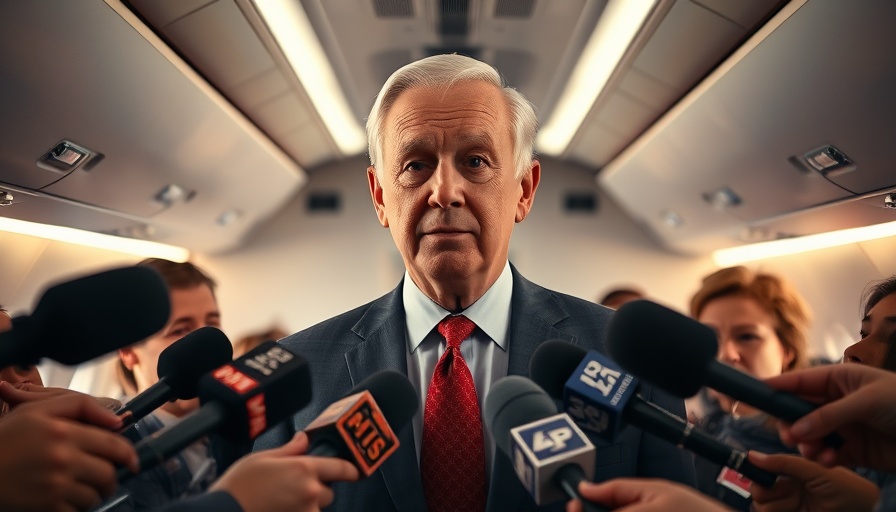
The Unpredictable Pivot: Trump’s China Strategy in Flux
In recent days, President Trump’s approach to China has showcased the unpredictable nature of his trade policy, revealing an internal conflict between fierce confrontation and cautious diplomacy. Initially, Trump ramped up tensions by threatening to impose 100 percent tariffs on all Chinese products—a response to Beijing’s control over rare earth minerals, which he described as both "sinister" and "a moral disgrace." His aggressive messaging suggested an escalation in what he terms the trade war with China.
The Desire for a Deal
However, within just 48 hours, the president shifted gears, opting for a gentler tone. He framed China’s recent actions as a "bad moment," signaling his intent to help rather than harm. This duality exemplifies the ongoing struggle within the administration as Trump attempts to reconcile two very different strategies: one focused on retaliation and another on negotiation. With a planned summit between Trump and Chinese President Xi Jinping looming, the push for diplomacy seems increasingly crucial, especially considering the mounting pressure on American farmers adversely affected by the trade standoff.
Market Reactions and Economic Implications
Trump’s conflicting statements have left financial markets in a state of whiplash. Following the initial threats, the stock market experienced a sharp decline, a clear reflection of investor anxiety over heightened trade tensions. Just as quickly, the markets began to recover as Trump adopted a friendlier tone, underscoring the delicate balance the administration must navigate.
Experts note that the pressure to reach a trade agreement comes not only from Wall Street but also from U.S. agriculture, which has already suffered from China’s suspension of purchases of American goods, such as soybeans. As the economic repercussions grow, the need for stability becomes more pressing.
The Dual Audiences of Leadership
Looking deeper into Trump’s strategy, analysts suggest that he is addressing two distinct audiences. The initial tough talk serves to present a firm stance against perceived Chinese overreach, aligning with his base and signaling strength. Conversely, the softening rhetoric appears aimed at soothing global allies and calming the markets, showcasing the complexity inherent in modern diplomacy.
Future Predictions: What’s Next for U.S.-China Relations?
As the situation unfolds, many are left to ponder what this oscillation between aggression and conciliation might mean for future U.S.-China relations. Will Trump’s tactics cultivate a long-term resolution, or will they breed further uncertainty? Depending on decisions made in the coming weeks, China and the U.S. might either foster a more cooperative framework or plunge deeper into conflict as each side tries to assert its influence on global trade.
Lessons for Global Economics
This moment serves as a reminder that in international relations, clarity of purpose is critical. Leaders must balance national interests with the necessity for stable partnerships. Observers around the world, including in countries like Germany, Canada, and India, are keenly watching how the U.S. navigates this tumultuous period, as it holds significant implications not only for America but also for global economic dynamics.
In this rapidly evolving landscape, it is crucial for the U.S. to communicate its intentions clearly and consistently, lest it further destabilize already precarious international relations. As we move forward, the outcomes of these diplomatic maneuvers will have lasting effects on global trade and international alliances.
 Add Row
Add Row  Add
Add 




Write A Comment